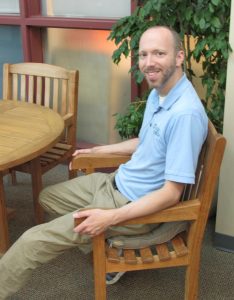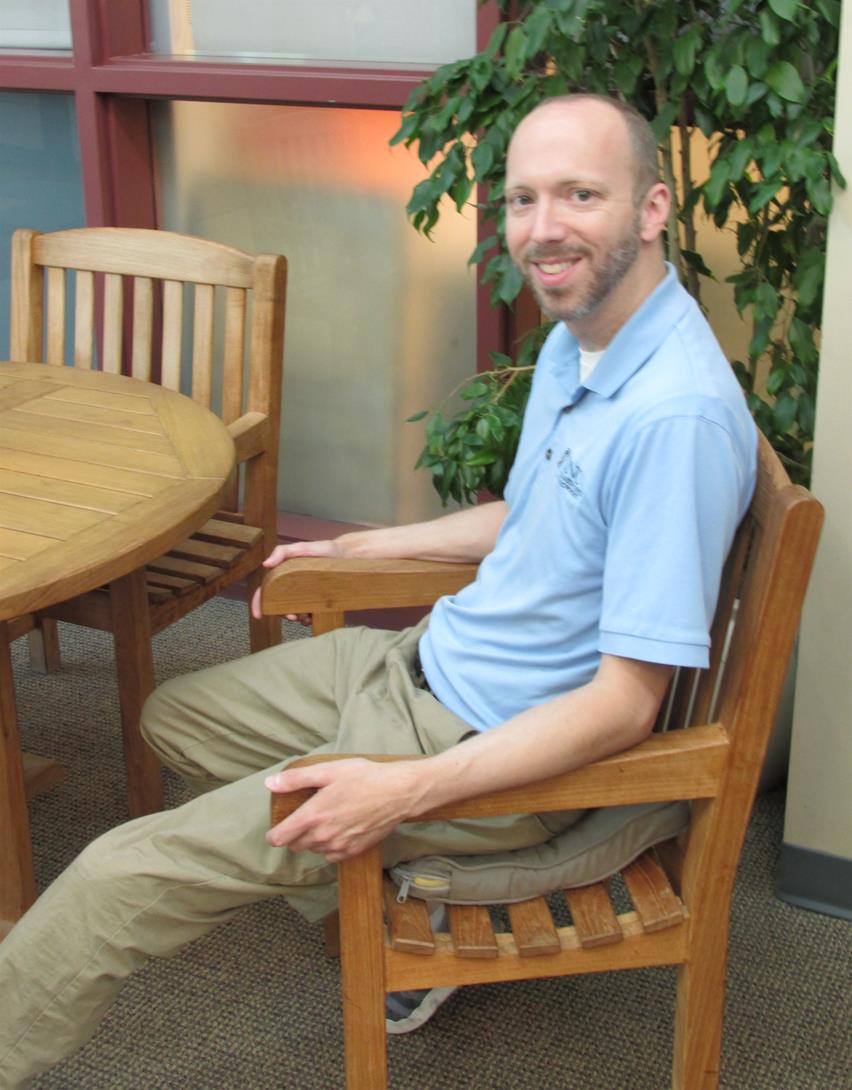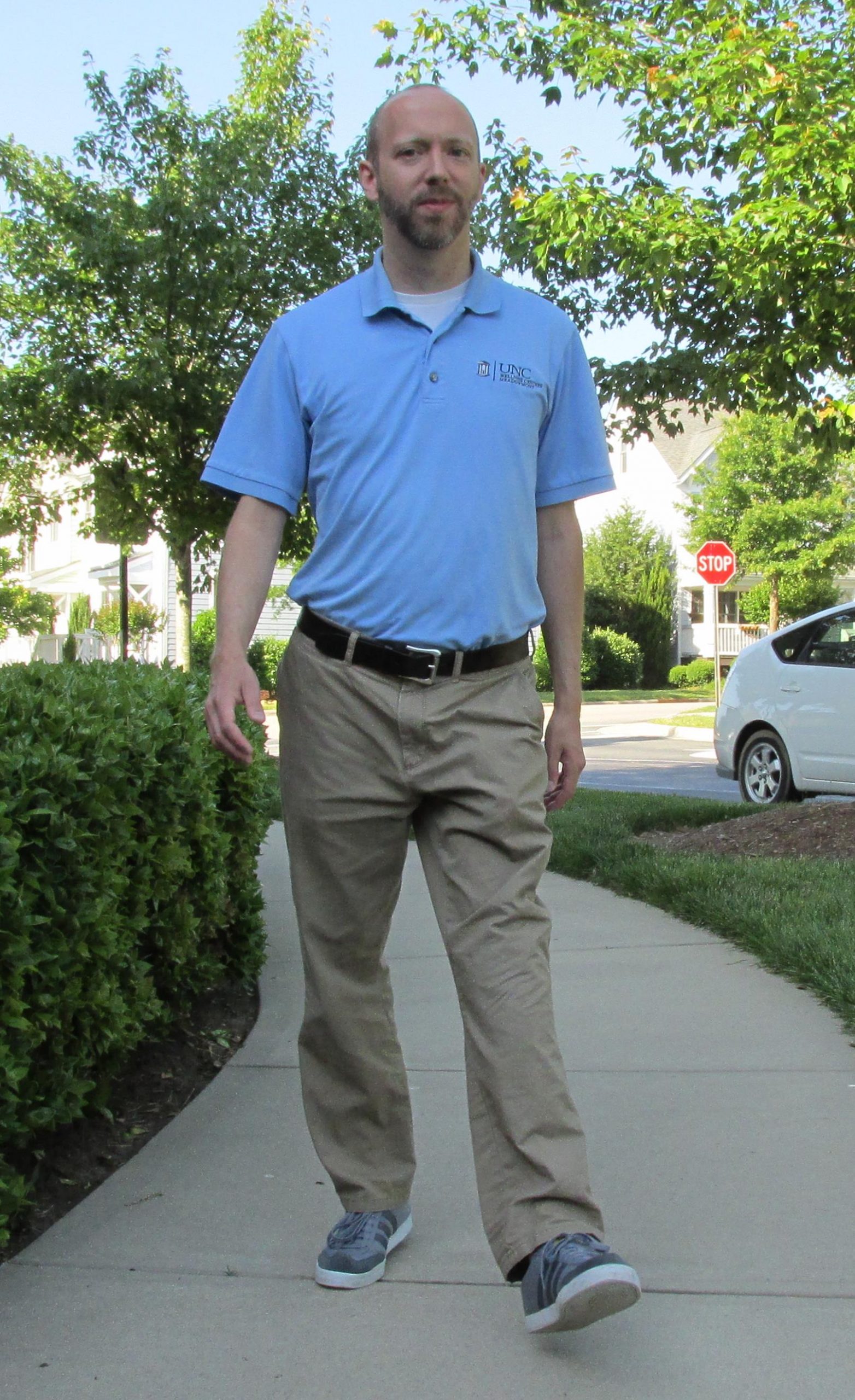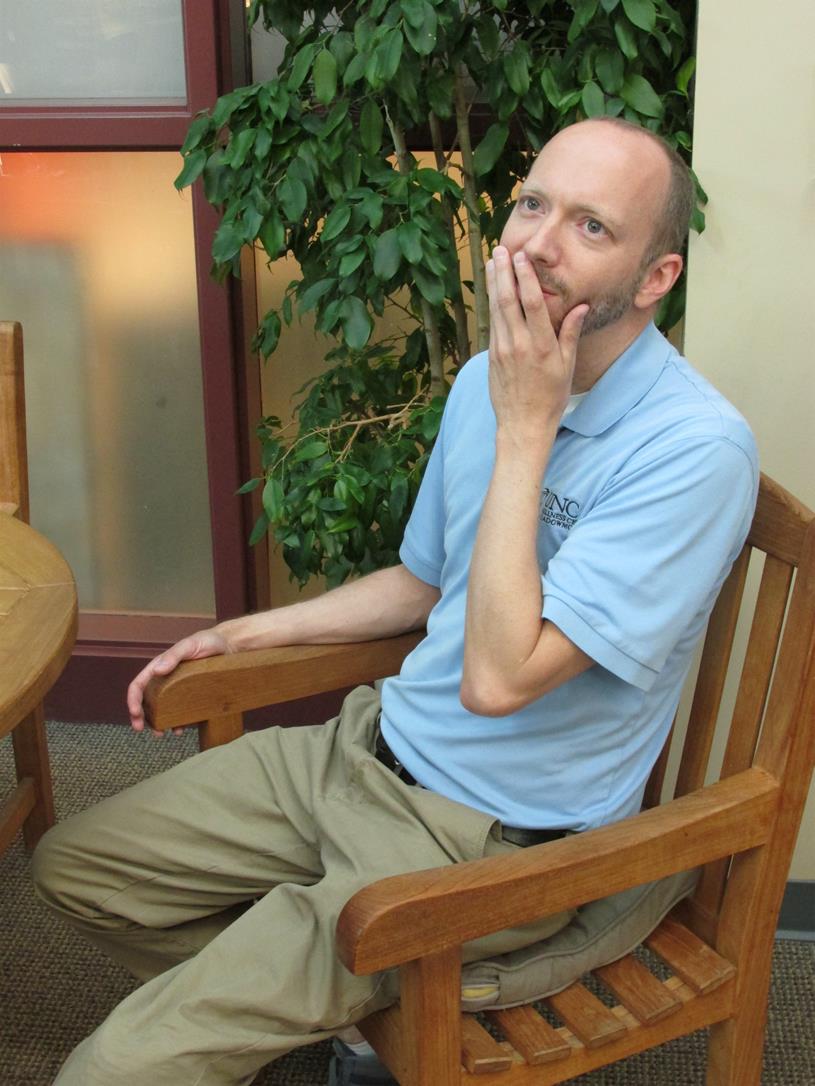Mike O’Hara uses his decade-long experience as a lower leg amputee to help new amputees as part of the Peer Mentoring Program, created by the nurses in the UNC Center for Heart and Vascular Care

Mike O’Hara uses his decade-long experience as a lower leg amputee to help new
amputees as part of the Peer Mentoring Program, created by the nurses in the UNC Center for Heart and Vascular Care


Being 13 years old is tough enough, but Mike O’Hara was faced with an even tougher challenge as a young teen.
In 1985, O’Hara developed a tumor on his left foot, which required surgery to remove. It was diagnosed as recurrent aggressive fibromatosis, which are benign tumors that, in most patients, have an unknown origin. Studies suggest that these tumors account for 0.03% of tumors, 1 and their incidence is approximately 3-4 cases per million, resulting in 900 cases annually in the United States. 2
A few years later, O’Hara felt another bump, this time on his calf. Over the next eleven years, O’Hara would develop a total of five tumors, all on his left foot and leg. He endured surgeries, radiation, rehabilitation, and almost constant pain.
Four years after his last tumor, O’Hara developed an ulcer on his left foot. He was treated with hyperbaric oxygen therapy, experienced pressure palsy, and dealt with constant reinfection of the ulcer.
After more than 15 years, O’Hara had had enough. He and his doctors made the decision to amputate his left leg above the knee, in the hopes of stopping tumor growth and ease the constant pain that O’Hara had been experiencing for more than a decade.
“Honestly, it was an easy decision,” says O’Hara. “I had been dealing with this for almost my entire life, and I was ready for the pain to end.”
So on a cold day in January 2002, O’Hara’s left leg was amputated. After the surgery, he had questions. Lots of questions.
How long until the surgery swelling goes down? When will I be fitted for a prosthetic? How do I deal with ‘phantom sensation’? Will I be able to work? How will this affect my family? My social life? Can I drive a car?
While his questions were eventually answered over time, he says, “It would have been nice to talk with someone who had been through this.”
The nurses in the Vascular Acute Care Unit at UNC Hospitals also think the same thing. They treat patients on a daily basis who are experiencing amputation due to vascular disease, and they wanted to offer their patients more than just excellent medical care. As part of the UNC Center for Heart and Vascular Care, they wanted to offer additional emotional support for new amputees and their families.
In 2012, the Peer Mentoring Program for amputees was created. Designed to provide support to new amputees and their families, Mike O’Hara enthusiastically volunteered to serve as the first mentor in the program.
Losing a limb and becoming an amputee leads to a range of physical and lifestyle changes and challenges for an amputee and their loved ones. Although the reasons for limb loss varies and creates new life challenges, it can also be a new beginning and a new way of living.
“I’ve worked with four patients over the past year,” says O’Hara, “They’ve expressed how happy they are to have someone to talk to. I’ve gotten a very good response so far.”
Speaking to someone who personally understands what it means to lose a limb can often be a great relief and allows a new amputee to ask questions and discuss issues that only someone who has been through it can answer. Recovery after an amputation can be a time of great uncertainty, doubt and many questions. Many amputees feel more comfortable talking with someone who understands what they are going through, someone who has experienced losing a limb and can appreciate how it feels.
“I talk to my mentees about pain management,” explains O’Hara. “I discovered through trial and error that often, my pain was easier to manage while standing on my new prosthetic, which feels very counterintuitive to new amputees, who think pain means they should not put weight on their new leg.”
Limb loss does not discriminate and people of all cultures, gender, ages and differing socio-economic status can be affected. “I had to work part-time for a long time, but realized during this time that I wanted to do something different with my life. It was very helpful for me to have time to adjust my priorities,” says O’Hara.
The Peer Mentoring Program at UNC allows amputees to connect with volunteers like O’Hara who are willing to share their time, knowledge and experience to assist others during their transition. The goals for the program includes giving new amputees the opportunity to speak openly about how they are feeling, addressing some of the issues and concerns that they have, and alleviating some of the distress they may be feeling.
O’Hara is not a physician, but he is an “expert” on the subject of living life as an amputee. Having lived with limb loss for more than a decade, and having successfully regained his independence, O’Hara has the knowledge needed to help others.
As O’Hara assessed his own career after his amputation, he realized that he wanted to work in the exercise and wellness industry. 
“You would think that a man with one leg would find a job that didn’t involve exercise,” O’Hara laughs. “But I now work at the UNC Wellness Center in Meadowmont, and I love it. I try to help people realize that they can do much more than they think they can. If I can inspire just one person to give little more effort each day to stay healthy and fit, then I know that my amputation is helping others.”
Mike O’Hara’s infectious enthusiasm, humor, and wit are evident as he “poses in deep thought” at the UNC Wellness Center at Meadowmont, where he works as a manager. He tries to inspire others to do more than they believe they can.
The Peer Mentoring Program also provides assistance and support to family members or caregivers who want to better understand how they can help a loved one who has experienced an amputation. O’Hara states, “I focus on the basics with patients and their families – standing, sitting, walking. It is the adjustment to your day-to-day activities that are sometimes the hardest to accept.”
O’Hara now describes dealing his amputation and prosthetic as routine. “It’s like putting on a sock. It’s something I do every day. When you feel comfortable doing something, you don’t really think about it. You just do it. That’s what my prosthetic is to me.”
O’Hara lives in Chapel Hill and is happily dating a woman who, of all things, is a ballet dancer. “A ballet dancer and an amputee,” laughs O’Hara. “I know, it’s crazy, right? But I have a great life, and my amputation doesn’t define me.”
1 P. J. Papagelopoulos, A. F. Mavrogenis, E. A. Mitsiokapa, K. T. Papaparaskeva, E. C. Galanis, and P. N. Soucacos, “Current trends in the management of extra-abdominal desmoid tumours,” World Journal of Surgical Oncology, vol. 4, article 21, 2006.
2 A.Duggal, I. C. Dickinson, S. Sommerville, and P. Gallie, “The management of extra-abdominal desmoid tumours,” International Orthopaedics, vol. 28, no. 4, pp. 252–256, 2004.